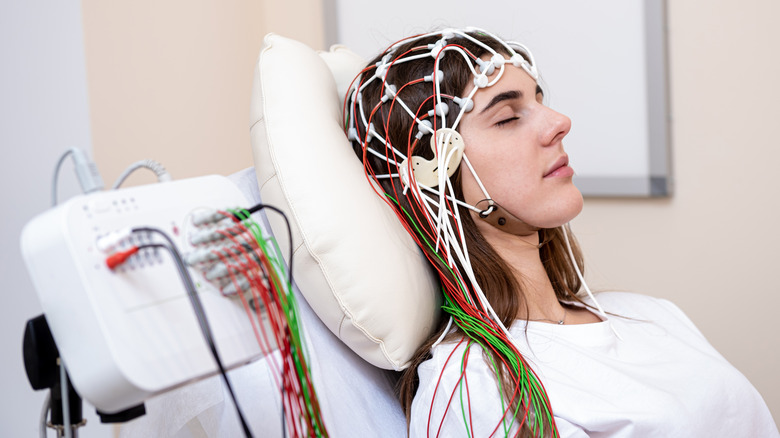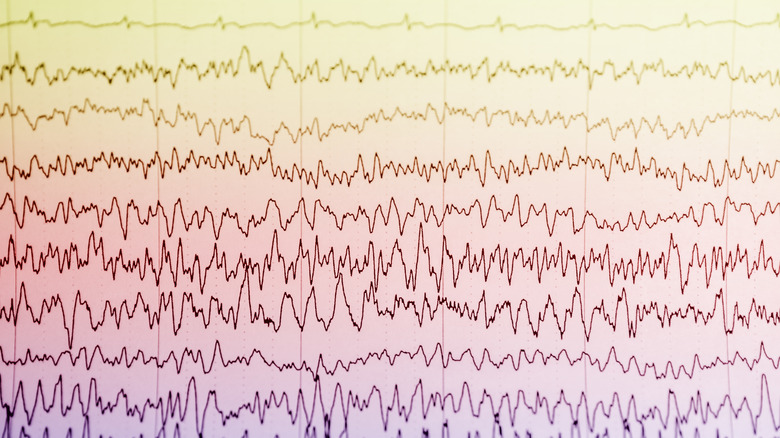This Is What Really Happens When You Get An EEG
Electroencephalography (EEG) tests are very common procedures, with somewhere between 10-25 million of them being performed every year (via Surgery Encyclopedia). However, that doesn't mean you're likely to have had one. The "brain-wave" test has been used for decades to help diagnose dysfunctions in the brain, such as epilepsy and other seizure disorders. However, it is also used to test for stroke, inflammation, sleep disorders, and brain tumors (via the Mayo Clinic).
The test works by measuring electrical activity in specific areas of the brain through small metal disks, which are attached to the scalp on one end and connected to a computer on the other. EEG tests have been performed for decades, and they are safe and painless. However, the thought of having any test done on your brain could be a little unnerving. It can help to have a clear idea of what actually happens during the procedure.
EEG results are recorded visually
First, a technician measures and marks your head to determine where the electrodes should be attached. They will then attach the electrodes (usually between 16-21 of them) to the scalp, either by using a special adhesive or by placing a cap on your head, which already has the electrodes attached to it.
Next, you'll be instructed to relax while the electrodes measure your brain's electrical activity and send the information to a computer, which produces a detailed visual record. The test can take up to 2 hours to complete. The technician may ask you to breathe deeply for a few minutes, or introduce some other stimuli, like flashing lights, to activate and measure activity in parts of the brain that are not normally active during rest (via Johns Hopkins Medicine). After the test, unless you took sedatives beforehand, you can resume normal activities immediately. Your doctor will examine your EEG records and discuss them with you afterward.
Researchers are now finding significant new uses for the technology. A new, rapid EEG test called "Fastball EEG" takes 2 minutes to complete, and shows promise for diagnosing dementia in patients up to 5 years earlier than would otherwise be possible. "Fastball offers a genuinely novel way of measuring how our brain is functioning," cognitive neuroscientist Dr. George Stothart told Nursing in Practice.


